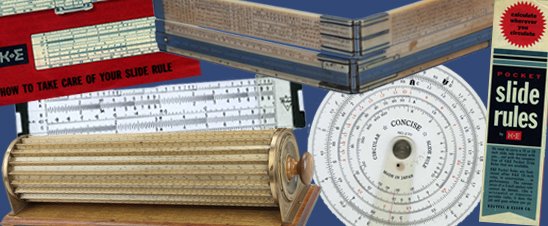Writing a logarithmic scale in a spiral that is then imprinted around the outside of a cylinder allows instrument makers to lengthen the scale. Since a logarithmic scale only needs to run to 10 twice to include all possible results from adding or subtracting two logarithmic numbers, this means that the distance between the points on the scale may be increased. When any two numbers on the scale are further apart, the user may read a fractional position between these numbers (expressed as a decimal) to a finer level of granularity. For example, on a 10" linear slide rule, results generally may be calculated to only three significant figures (0.123, 1.23, 12.3, 123, 1230, and so on). A cylindrical slide rule may provide results of up to seven significant digits (0.1234567, 1.234567, 12.34567, 123.4567, 1234.567, and so on).
On the other hand, cylindrical slide rules were typically about twice as expensive to produce as linear slide rules, and the provenances for the objects on this page indeed suggest that, in the main, only corporate and government offices could afford them. A number of the objects in this category were received with instruction manuals and advertising pamphlets, which may be viewed in the Index by Makers & Retailers. The collection includes multiple examples for several of the objects, as the 23 items below represent only eight different slide rules, half developed in Europe and half invented by Americans. The cylindrical slide rule by Edwin Thacher, a Pennsylvania railroad bridge designer, also illustrates the 19th-century shift in production from Europe to the United States, as originally William Ford Stanley's London firm made the entire instrument. Then, Keuffel and Esser of New York City began constructing the wooden drum and brass and wood stand while continuing to import the scales printed on paper and pasted around the drum. Finally, K&E developed its own dividing engine for printing the scales and henceforth manufactured the entire instrument in the United States.
